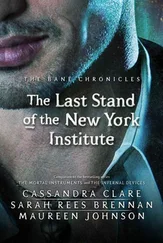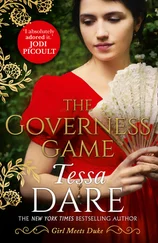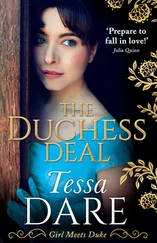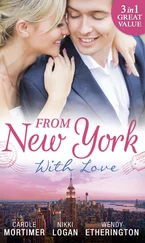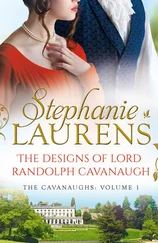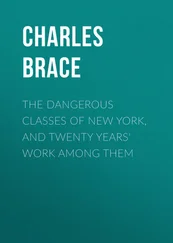There wasn’t any magic that suddenly transformed skid row winos into intellectuals, but they listened, or pretended to listen, perhaps just appreciative of being included in the week’s main social event and entertainment. Michael Harrington, whose young days at the Worker would later inform his landmark book The Other America , which inspired Lyndon Johnson’s antipoverty program, recalled that the first talk he gave in the regular Friday night series was about Martin Buber’s essays on communitarian socialism, to an audience that included “the somewhat perplexed refugees from the Bowery” as well as intellectual “adepts.”
Some of the former winos and other “refugees” from the Bowery genuinely got caught up in the infectious intellectual excitement at the Worker. Tony, the tough guy who greeted Mary Ann McCoy at the door when she first came to Chrystie Street, had once sold pints of his blood for money to buy wine, a common practice of men in the Bowery. After a few years of living at the Worker, he sold a pint of blood to buy theater tickets for a play by García Lorca.
It was on Friday evenings that fall, after the talks at the Worker, that I met Mike Harrington, the wide-grinning guy from St. Louis who spoke of socialism with a midwestern twang, and Ned O’Gorman, a big, broad-shouldered graduate student who was bursting with poetry he loved to recite, whether it was Yeats’s or his own. He would soon have his first book of verse published, Night of the Hammer . To my added surprise and delight I also met girls there, like Mary Ann McCoy, a vitally attractive Irish blonde from Queens, and Helen Russell, a tall, dark-haired former novice of a convent in California. The Mother Superior had discovered her playing Ravel’s Bolero over and over, and said, “I know where you belong.” She gave Helen the latest issue of the Catholic Worker . Helen read it and soon left the convent, took a bus to New York, and volunteered to work for Dorothy Day.
I was flattered to be asked to speak myself at one of the Friday night lectures, a few months after I first went there. I had just come back from the Emmet Till trial in Mississippi, and describing it to that very mixed audience in the backyard of the Chrystie Street house on a warm September evening was my first experience of public speaking, except for school and college. I could not have found a more polite and appreciative crowd, and it made me love the place all the more.
After the coffee session in the kitchen following the lectures, a group would usually gather to go to the White Horse Tavern. There the talk continued over pints of ale or beer, or the favored combination of arf ’n’ arf, and soon everyone broke into songs of Irish rebellion, or love, or protest, folk songs joined and swelled by the Clancy Brothers or long-haired, blond Mary Travers, who also hung out in the back room of the Horse.
The radical spirit of the Catholic Worker did not just dissipate in talk and beer and folk songs, though. “I wanted to spread the word, so I took big stacks of the Catholic Worker back to my parish in Queens,” Mary Ann McCoy recalls. “I’d stand outside the church after mass with the paper, but nobody would buy it, even for the price of a penny. This was the Cold War, remember—Senator McCarthy was hunting Reds, people were afraid. The little newsboys selling the Brooklyn Tablet , the paper of the diocese, took pity on me and slipped my copies of the Catholic Worker inside the Tablet , which was an archconservative paper.”
The Catholic Worker caused controversy throughout the ranks of the faithful. Even though the pope sent a special blessing to all who were concerned with the movement, and some bishops and priests personally contributed to it, others forbade the paper from being sold at their churches. Catholics who were shocked at the pacifist-anarchist sentiments of the paper had even attacked people who sold it in the street.
“Our priest asked me to invite Tom Sullivan, one of the editors of the Worker , to speak at our parish,” Mary Ann says, “but when I asked, Tom couldn’t or didn’t want to come to a conservative parish in Queens. Dorothy Day was listening and she said, ‘I’ll come.’ She felt it was her duty to speak to everyone who asked, to spread the gospel message of the Catholic Worker.”
“Well, the parish came out in droves to hear her. She spoke in defense of anarchism—she said you didn’t need laws to be good. She said you should have a guest room in your house to take in someone who has no home, everyone who has a house should have this kind of hospitality room. Some people were impressed, others objected to her coming, thought she was a Red. Later there was a big argument about it at a meeting of the parish board. There was a man on the board who was a butcher in the neighborhood who once had been down and out on the Bowery, and he’d been fed by Dorothy and the Catholic Worker. He defended Dorothy, and when one of the other men objected to her coming to the parish, calling her a Red, the butcher wrestled the man to the floor.”
Mary Ann was one of the group from Chrystie Street who had gone with Ammon Hennacy and Dorothy Day to City Hall Park to protest the air-raid drills, and all of them were thrown in jail. Betty Bartelme and some of the other Catholic Worker volunteers heard that the group had been arrested and went down to try to help get them out. “We couldn’t get in to see them,” Betty remembers, “but we could hear their voices call out to us. They said they were hungry, so we went to the Muni [the Municipal Cafeteria] on Canal Street and got sandwiches for them. Mary Ann McCoy was yelling out telephone numbers of friends to call to help raise bail. Another woman volunteer and I made phone calls from the jail, until one of the jailers said if we didn’t get out he’d run us in as a couple of prostitutes. That night we ran all over town to try to raise money for bail. We managed to get enough together to get Dorothy out that day, but the others had to spend the night in jail.”
The six protesters from the Catholic Worker and nineteen other pacifists who had been arrested for disobeying the New York State Emergency Defense Act were scheduled to appear for sentencing in December 1955 at a magistrate’s court uptown. I went to court with Ammon Hennacy that morning. He had pleaded guilty and brought a canvas bag of books with him to read in jail. “If you don’t take ’em with you,” he told me, “you can bet they aren’t going to give you any after you’re in.” He had packed a volume of poetry by Shelley, the stories of Tolstoy, a book on the Irish rebellion, and the Bible. With his books slung over his shoulder and a dark maroon stocking cap pulled down over his thick gray hair, Ammon was ready to go. I was proud to be with him.
What made me admire this snaggle-toothed old guy, with his cardboard picket signs and his hodgepodge of Catholic-anarchist beliefs, was his willingness to go against the grain, to challenge the conformity of the fifties. I found some notes I made at the time for an article I wanted to write on Ammon, and they convey the way I saw him as a symbol: “Far from the lonely crowd there lives an anti–organization man whose principal possessions are health and a vision.”
The message of two best-selling books of the time, David Riesman’s The Lonely Crowd and William H. Whyte’s The Organization Man , was that our society was going to overwhelm the individual and make him (you and me!) part of an anonymous mass culture, blinding him to the evils around him, as well as to the passion and joy. Ammon’s very existence was an antidote to that facelessness, proof that an individual could go his own way, follow his own lights, stick to his own unpopular course that he thought was right.
Читать дальше

